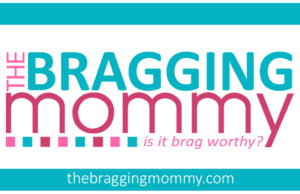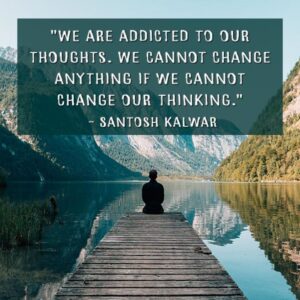A fall isn’t always just a stumble. For many older adults, it’s the moment everything changes—mobility, confidence, and even independence. What seems minor at first can lead to hospital stays, long recovery times, and lasting emotional impact. That’s why fall prevention must begin long before a fall occurs. At InTouch Healthcare Solutions, early action and customized care planning help seniors stay steady, safe, and independent in their daily lives.

The Real-Life Impact of a Fall
Falls don’t just cause physical injuries. They can also lead to emotional setbacks such as fear, anxiety, and isolation. Seniors who fall once often become more hesitant to move around, which in turn weakens their muscles and increases their risk of falling again. This cycle can lead to a gradual loss of independence.
Financially, the consequences can be heavy—medical bills, home modifications, and long-term care needs can quickly add up. More importantly, a fall may force families into urgent decisions about their loved one’s future. That’s why fall prevention needs to be a proactive, not reactive, strategy.
Common Causes That Increase Risk
Falls often result from a mix of age-related factors and environmental conditions. The most common include:
- Slippery floors or loose rugs
- Poor lighting in hallways or staircases
- Muscle weakness or reduced balance
- Dizziness from medications
- Poor vision or hearing
- Chronic health conditions like arthritis or diabetes
- Confusion or memory loss
Many of these causes go unnoticed until a fall happens. Recognizing them early can help families take simple yet effective steps to reduce the risk.
Small Changes That Make a Big Difference
Preventing falls often starts at home. A few basic adjustments can drastically reduce risk:
- Install grab bars in bathrooms and near staircases
- Use non-slip mats in showers and tubs
- Clear clutter from walkways
- Replace dim lighting with brighter, energy-efficient bulbs
- Keep essential items within easy reach
- Use sturdy chairs and avoid step stools
These home safety improvements are easy to implement and can dramatically enhance daily safety for older adults.
Strengthening the Body to Prevent Falls
Age-related muscle loss and poor balance are common contributors to falls. Staying physically active is key to preserving strength, coordination, and confidence. Even simple exercises like walking, chair yoga, or light resistance training can make a big difference.
Older adults who engage in consistent, low-impact physical activity tend to have better mobility and fewer falls. Movement improves not just the body—it builds the confidence needed to remain active and engaged in life. It’s also helpful to incorporate activities that specifically challenge balance, such as standing on one foot while holding onto a sturdy surface, gentle heel-to-toe walks, or using stability balls under supervision.
Medication and Health Reviews
Some medications can cause dizziness, drowsiness, or low blood pressure. These side effects significantly raise the chance of a fall, especially in older adults taking multiple prescriptions. A regular medication review with a healthcare provider is an important fall prevention step.
Vision and hearing play a crucial role as well. Difficulty seeing or hearing increases the risk of tripping or missing environmental cues. Annual check-ups and updated prescriptions for glasses or hearing aids are small steps that can make a major difference.
Building a lifestyle around fall safety for older adults means considering more than just the physical space. It means evaluating health, medications, and habits to create an environment that protects and empowers seniors every day.
Emotional and Mental Health Matter
Emotional wellness is closely tied to physical safety. Seniors who feel depressed or anxious may have slower reaction times, take unnecessary risks, or withdraw from activities that help maintain strength. Confusion or cognitive decline can also lead to poor decision-making, such as forgetting to use mobility aids or misjudging distances.
Families and caregivers can help by maintaining consistent routines, providing companionship, and encouraging participation in mentally stimulating activities. Reducing stress and creating a stable environment can support both safety and mental health.
Communication Makes All the Difference
Older adults may hesitate to talk about balance issues or fear of falling. They may see it as a sign of losing independence. That’s why families should look for early indicators—bruises without explanation, slower walking pace, or hesitance on stairs.
A gentle conversation about safety, not limitations, can lead to acceptance of helpful tools or changes. The goal should be preserving independence, not taking it away.
When to Involve Professional Help
Sometimes, families can’t manage fall risks on their own. This is where experienced care providers come in. Trained caregivers can monitor daily routines, assist with movement, and suggest home modifications to improve safety. They can also provide insight into early signs of mobility decline that may go unnoticed by loved ones.
Whether it’s for a few hours a week or ongoing support, professional help can make the difference between constant worry and peace of mind. It allows seniors to live confidently, knowing that someone is there to support their safety.
Rethinking Our Approach to Falls
Many people view falls as accidents that just happen. But most are predictable and preventable. The key is shifting our mindset from reacting after a fall to preventing it in the first place.
That shift means staying observant, making home improvements, encouraging physical activity, and creating a support system. It means asking questions like: Is my loved one walking slower? Are they holding onto furniture for balance? Do they avoid certain parts of the home? These questions often reveal hidden risks before an incident occurs.
By building a culture of awareness and preparedness, we can stop seeing falls as inevitable and start treating them as preventable.
Conclusion
Falls are not simply part of aging—they are a signal that something needs attention. With the right care, preparation, and support, families can dramatically reduce the risk. From physical activity and home adjustments to emotional wellness and expert help, fall prevention is a team effort that starts today.
Don’t wait for a fall to make changes. The steps you take now may be the turning point that protects your loved one’s future and quality of life. Whether it’s a conversation, a grab bar, or calling in professional support, every action matters. And every step forward in safety is a step toward preserving dignity, mobility, and peace of mind.


